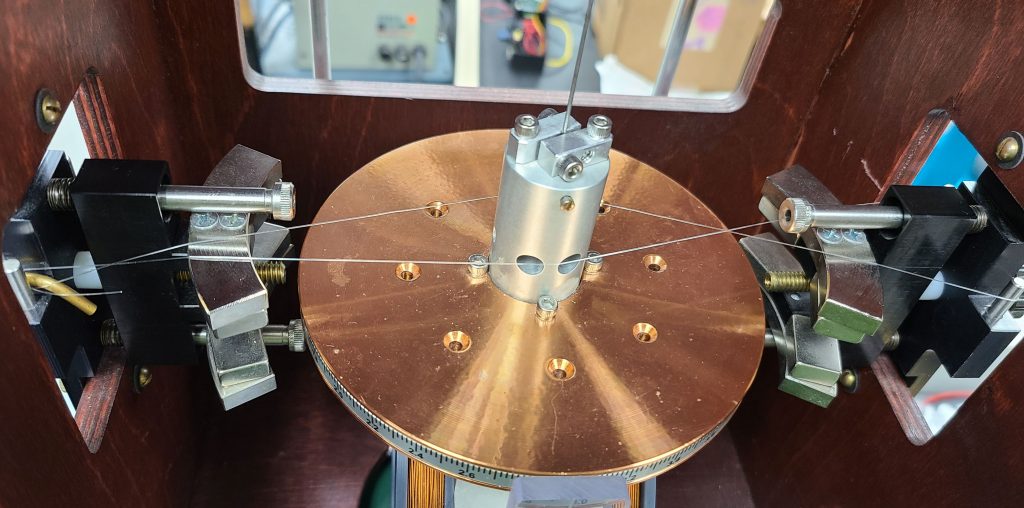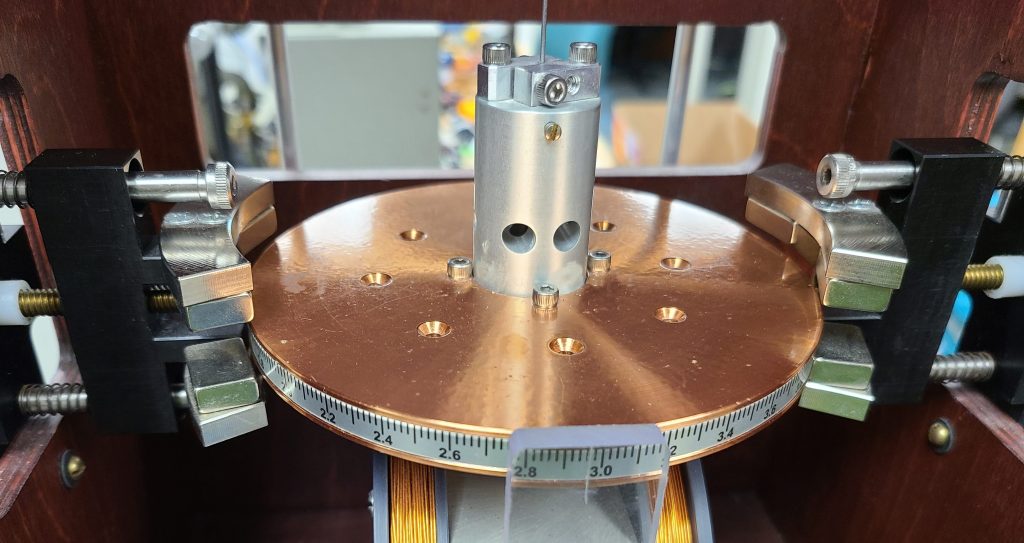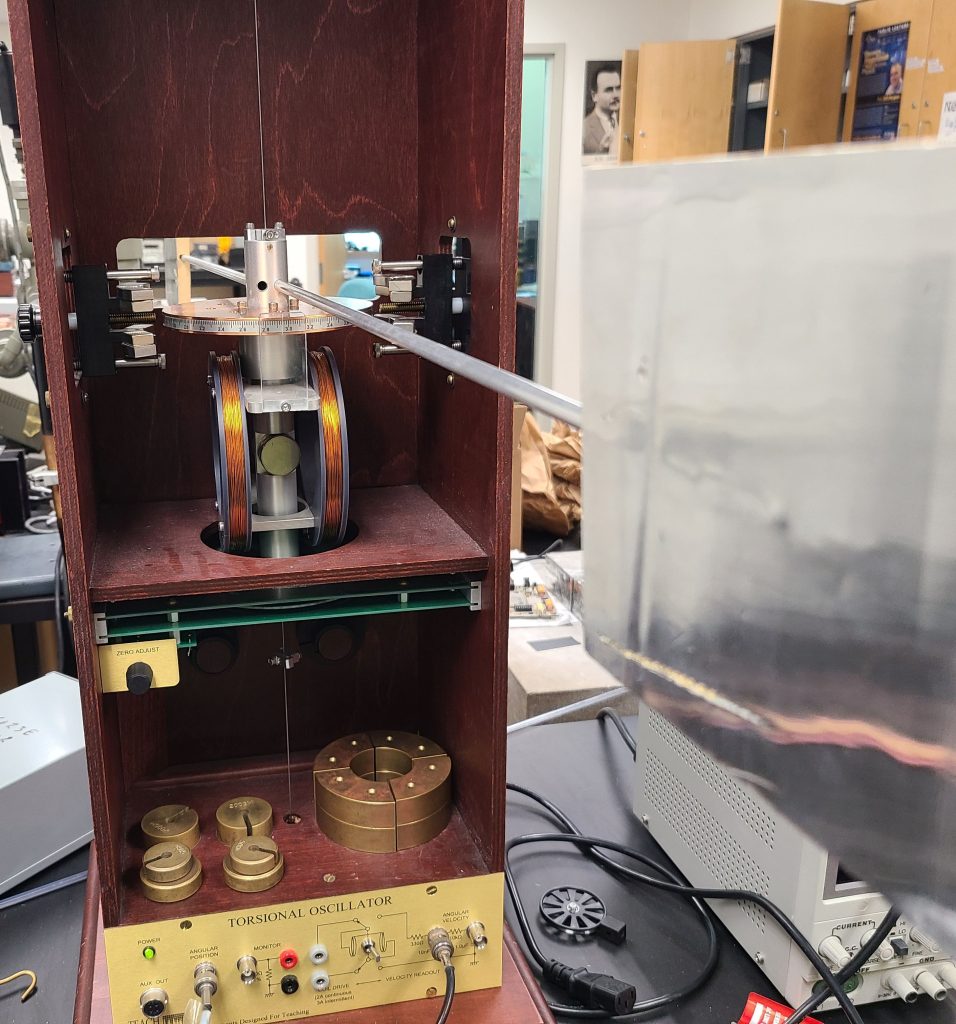Torsional Oscillator
Apparatus
There are a few apparatus pieces you’ll need in order to make these damping measurements.
Linear Damping ( )
)
You will use some strings tied across the rotor to add a constant friction force. See Figure 3.0 in the TeachSpin Manual and Figure 2 below.

Typical Damping ( )
)
To achieve the easily-modelled ![]() damping, you will engage two magnet stacks on either side of the apparatus. As the copper disk moves through the magnetic field, eddy currents develop in the copper which acts as a drag force proportional to the velocity of the copper disk. The knobs on either side of the apparatus move the magnet stacks by 1/20 of an inch (about 1.27 mm) with every turn. Figure 4 shows the magnetic dampers barely overlapping the copper disk.
damping, you will engage two magnet stacks on either side of the apparatus. As the copper disk moves through the magnetic field, eddy currents develop in the copper which acts as a drag force proportional to the velocity of the copper disk. The knobs on either side of the apparatus move the magnet stacks by 1/20 of an inch (about 1.27 mm) with every turn. Figure 4 shows the magnetic dampers barely overlapping the copper disk.

 damping, barely overlapping the copper disk
damping, barely overlapping the copper diskFluid Damping ( )
)
Fluid damping is achieved using very light and VERY fragile paddles that are mounted into the rotor. Please ask the TA or technician to discuss how to use the paddles in a way that won’t damage them. The paddles drag the air around them as the rotor turns, which is an important factor at relatively high velocity, but negligible when the rotor is turning slowly. The paddles are shown in Figure 5.

Chapter 6.1 in the TeachSpin manual contains dimensions and masses of the various components.
